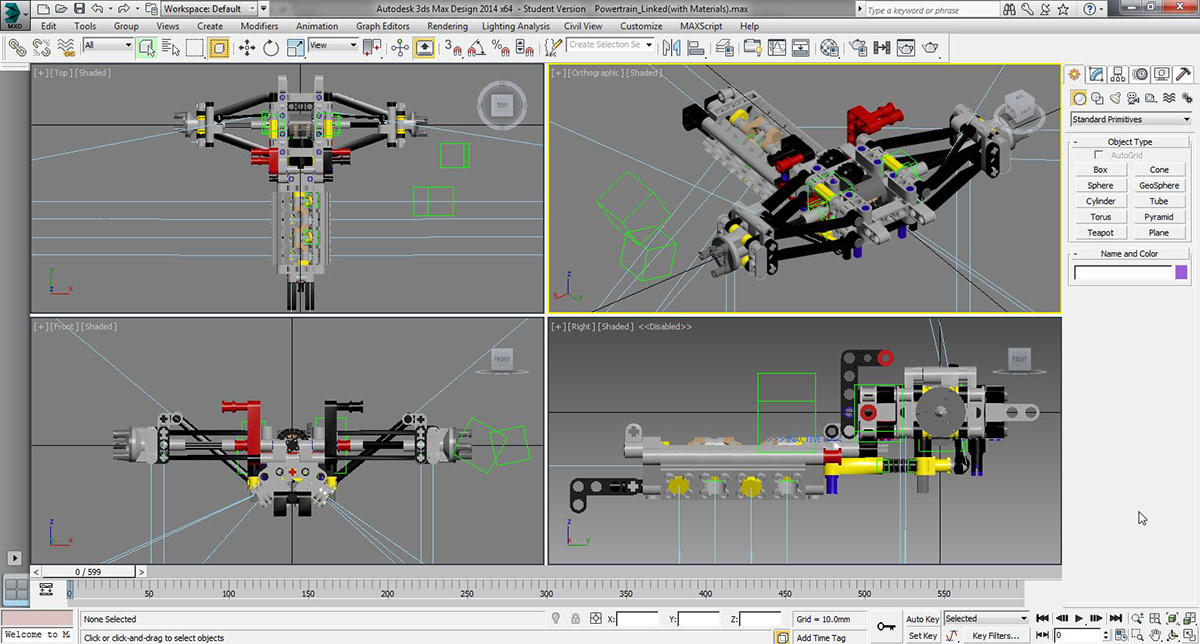Team: Stefan Klein, Andy Mah, Joanna Wu, Alex Zhang
The premise of this project was to animate the assembly and operation of a moderately complex
mechanical device. Our team chose to model the LEGO Technic Grand Prix Racer (42000).
mechanical device. Our team chose to model the LEGO Technic Grand Prix Racer (42000).
This 1,140 piece lego set has independent wheel suspension, adjustable spoilers, a V8 engine with moving pistons, and a full working differential.
We modeled and animated each and every piece of this behemoth LEGO set.
The final product was a 6 minute video, running at 24 fps.


Disassemblig the car

Bagging unique pieces together to be CADed. There were 150 unique pieces.

Dimensions were determined in mm using calipers and modeling was first done in Creo.

After creating all the parts, we made new assemblies and mated the parts grouped by subassemblies of the car. This was done before importing the files into 3DS Max so pieces would be placed in the right place and orientation. We found that 3DS Max is all about estimating; joining parts together and accutely placing them is hard to do within its convoluted program.

Different parts of the car were given linked motion. Individual part motion and visibility were also keyframed.

Keyframing the camera and adding light sources.

We tinkered with the material choice to get just the right amount of shine to make each piece look and behave realistically. We also chose to use dynamic lighting to highlight the characteristics.

Frame showing powertrain (differential to the engine pistons).

Subassemblies coming together.

Takeaways:
- Rendering can vary widely in time; our shortest frame took just a few minutes, our longest frame took 6 hours.
- Frames that contain transparent pieces (when pieces transition between visible and invisible) take significantly longer to render because lighting is more dificult to compute.


